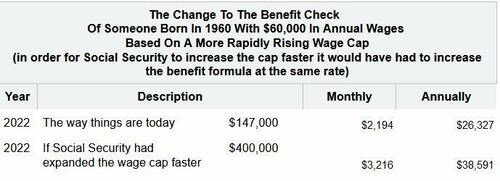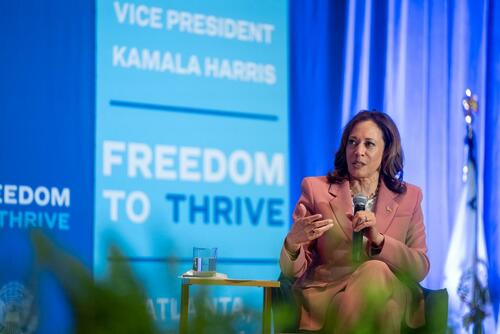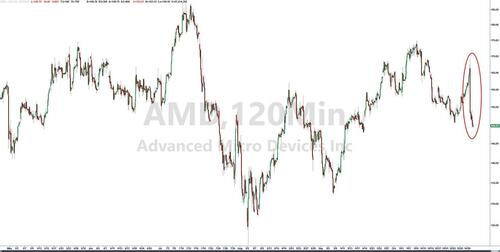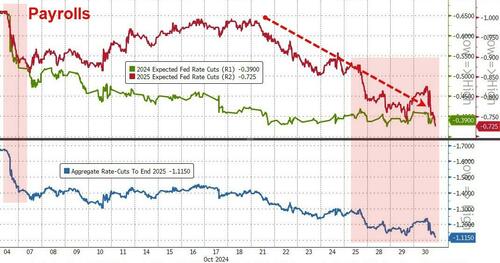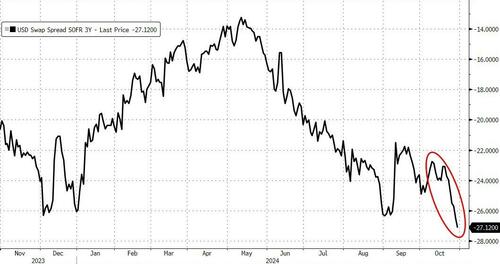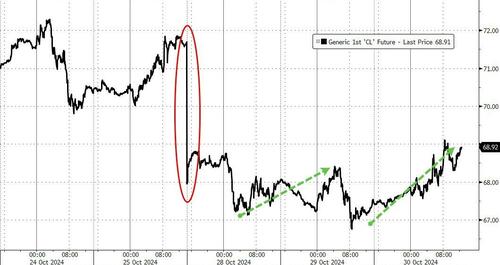Authored by Nick Corbishley via NakedCapitalism.com,
Canada and Australia shelve plans for retail CBDCs while the US could soon become the first country to explicitly ban the central bank from issuing a CBDC.

As we warned in May 2022, a financial revolution is quietly sweeping the world (or at least trying to) that has the potential to reconfigure the very nature of money, making it programmable, far more surveillable and centrally controlled. To quote Washington DC-based blogger and analyst NS Lyons, “if not deliberately and carefully constrained in advance by law,… CBDCs have the potential to become even more than a technocratic central planner’s dream. They could represent the single greatest expansion of totalitarian power in history.”
At the time of writing that post, around 90 countries and currency unions were in the process of exploring a CBDC, according to the Atlantic Council’s CBDC tracker. Today, just two and a half years later, that number has increased to 134, representing 98% of global GDP. Around 66 of those countries are in the advanced stage of exploration—development, pilot, or launch.
But they do not include the United States. In fact, the US is not just trailing most countries on CBDC development; it could soon become the first country to explicitly ban the central bank from issuing a CBDC, to the undisguised horror of certain think tanks.
“CBDC Anti-Surveillance State Act.”
In May, the US House of Representatives passed HR 5403, also known as the “CBDC Anti-Surveillance State Act.” The bill, first introduced in September 2023 and sponsored by US Senator Ted Cruz, proposes amendments to the Federal Reserve Act to prohibit the US Federal Reserve from issuing CBDCs. It also seeks to protect the right to financial privacy and prevent the U.S. government from “weaponizing their financial system against their own citizens.”
If passed, HR 5403 will prevent the Fed from:
-
Offering products or services directly to individuals.
-
Maintaining accounts on behalf of individuals.
-
Issuing a central bank digital currency or any digital asset that is substantially similar under any other name or label directly to an individual.
To become law, the bill still needs to clear the Senate, which is by not means guaranteed. But it is likely to receive added impetus from a new Trump administration, assuming Trump wins the election and isn’t assassinated before taking office or thwarted by a colour revolution, as Lambert posited yesterday. In January, Trump announced, to thunderous applause, at a New Hampshire that as president, he would “never allow the creation of a central bank digital currency.” Such a currency, he said, “would give a federal government, our federal government, absolute control over your money.”
Even a Kamala Harris administration is unlikely to fast-track a digital dollar, with progress set to continue to lag other jurisdictions, according to an article in The Banker. US voters — particularly Republican ones — are increasingly aware — and wary — of the threat posed by CBDCs, as demonstrated by the crowd’s reaction to Trump’s announcement. This, if nothing else, stands as testament to the power of social and independent media, and goes a long way to explaining why governments across the West are trying desperately to muzzle them.
Teeth Gnashing in Think Tankland
The prospect of the US, current holder of the world’s reserve currency, permanently pulling out of the global race to develop a CBDC is prompting all manner of teeth gnashing in think tankland. In March, the Brookings Institute warned that while “the US dollar remains king” — for now — “unless US policymakers take decisive steps to adapt to an increasingly digital financial system, the United States risks losing the economic and geopolitical advantages afforded to it by the dollar’s dominance of the global financial system.”
The Atlantic Council put it in even starker terms. In an article titled, “Don’t Let the US Become the Only Country to Ban CBDCs,” Josh Lipsky, the senior director of the Council’s GeoEconomics Center, and Ananya Kumar, the associate director for digital currencies at the GeoEconomics Center, warn that the passage of HR 5403 could do significant harm to the future of the dollar as well as throttle innovation across both the public and private sector:
The United States trails all of its Group of Seven (G7) peers when it comes to researching and developing a CBDC. Outside the G7, the gap is even wider. Eleven Group of Twenty (G20) countries are in the pilot stage, including Brazil, India, Australia, South Korea, and Turkey. China, too, is on the list and already has 250 million users.
In the absence of US-led models and regulatory roadmaps, there is a growing risk of a fragmented payment system emerging in which different models proliferate and make the international financial architecture more expensive and less efficient. This is the exact opposite of what banks are trying to achieve with these new technologies.
Critics of CBDCs rightly raise concerns about citizens’ privacy. If the Federal Reserve issues a digital form of cash, couldn’t the government then “surveil” the population and see how citizens spend their money? The solution, however, is not to remove the United States from the playing field, which would allow countries such as China, which will not prioritize privacy, to set standards for the rest of the world. Instead, the United States should work with partners and allies to develop digital assets with democratic values—ones that protect privacy, ensure cybersecurity, and foster a healthier global financial system.
In fact, if this bill ever became law, the United States would be the only country in the world to have banned CBDCs. It would be a self-defeating move in the race for the future of money. It would undercut the national security role of the dollar as the decision would only accelerate other countries’ development of alternative payment systems that look to bypass the dollar in cross-border transactions. This would make US sanctions less effective.
It is one thing to decide not to issue a CBDC—and several countries are debating that precise issue right now. But it is an unnecessary and harmful step to preemptively ban the Federal Reserve from even exploring the idea.
Among the countries that have decided, or at least claim to have decided, not to issue a “retail” CBDC — i.e., one meant for use by members of the public — are two fellow five-eye nations: Canada and Australia.
The Bank of Canada was one of the first Western countries to begin exploring the idea of issuing a CBDC, a whole seven years ago. Until recently, it seemed that the central bank was intent on launching a retail CBDC. In the summer, it argued that Canada would need its own digital currency to maintain monetary sovereignty and financial stability, among other reasons, as people continue to use less cash. Then, just a month ago, it quietly reversed policy. As CBC reported, the central bank is now less eager to develop a digital Loonie.
“The Bank has undertaken significant research towards understanding the implications of a retail central bank digital currency, including exploring the implications of a digital dollar on the economy and financial system, and the technological approaches to providing a digital form of public money that is secure and accessible,” the bank said in an email statement.
Instead, the central bank said its focus will be on preparing for the ongoing evolution of payments both in Canada and around the world, through policy research and analysis.
The announcement came almost a year after a public consultation by the central bank revealed widespread public hostility and skepticism toward the proposed launch of a CBDC. Eighty-five percent of respondents said they would not use a digital Loonie in their own lives (unless, of course, forced to) while 92% said there were no circumstances in which they would rather use a digital Canadian dollar over current forms of payment.
The respondents also flagged issues with trust and security with 87% saying they distrusted the ability of the Bank of Canada to create a secure CDBC that is resistant to cyberattacks (87%). Sixty-three percent raised concerns about the security of current forms of digital payment, such as debit and credit cards, money transfers, and digital wallets (63%). Survey respondents also reported concerns about the federal government (86%), tech firms (86%), financial institutions (72%), and the Bank of Canada itself (79%) accessing personal payment data.
In September, the Bank of Canada Governor governor Tiff Macklem said “there is not currently a compelling case to move forward with a CBDC in Canada.” The central bank is not closing the door entirely on the possibility, however, stating that it will “continue to monitor global retail CBDC developments,” and that “the body of knowledge built over recent years will be invaluable if, at some point in the future, Canadians, through their elected representatives, decide they want or need a digital Canadian dollar.”
The chances of that are pretty slim if the public’s response to the consultation is anything to go by. Meanwhile, at the opposite end of the Pacific Ocean the Reserve Bank of Australia has also expressed doubts about developing a retail CBDC, turning its attention instead to a wholesale CBDC.
What is the difference?
A retail CBDC is meant for use by the general public and businesses of all shapes and sizes while a wholesale CBDC is intended for transactions, particularly cross-border ones, between banks and other financial institutions. Speaking at the recent Intersekt Conference in Melbourne, the RBA’s assistant governor Brad Jones said the central bank sees more value in a wholesale digital currency:
“I can confirm that the RBA is making a strategic commitment to prioritise its work agenda on wholesale digital money and infrastructure – including wholesale CBDC – rather than retail CBDC.”
The RBA believes that a retail CBDC poses more potential “challenges” to the financial system while its impact on the Australian economy is likely to be less “promising”. A wholesale CBDC would be more of an evolution than a revolution, Jones said, making it easier for the commercial banks and payments firms to adapt to the changing reality.
This near-simultaneous shift by Canada and Australia appears to be part of a broader global trend away from retail CBDCs. In recent months, central banks in Switzerland and Taiwan have both expanded wholesale CBDC projects at the expense of retail alternatives. A report by the Bank for International Settlements (BIS) has also confirmed this shift, revealing a sharp rise in wholesale CBDC projects, particularly in advanced economies. The likelihood of issuing a wholesale CBDC within the next six years now surpasses that of issuing a retail CBDC.
That’s not to say that many of the world’s largest economies aren’t aggressively pursuing a retail CBDC, including all five of the BRICS founding nations, Brazil, Russia, India, China and South Africa, as well as the EU, Turkey and Iran, all of which are at the pilot phase.
In the two other Five-Eye nations, the United Kingdom and New Zealand, the central banks are moving ahead with their retail CBDC plans but both are a long way from reaching pilot phase. Both also face strong resistance from their respective commercial banking sectors. In New Zealand, the national banking association has warned that a retail CBDC could accelerate bank runs. In the UK, the head of the City of London Corporation, London’s Lord Mayor Michael Mainelli, told a recent conference organised by the Digital Pound Foundation that while CBDCs can fight financial crime, as payments are traceable, they have a dark side: “loss of privacy.”
Meanwhile, Back in the US…
Dollar-backed stable coins are being touted as a means of entrenching US financial supremacy supremacy in global finance. Trump appears to be on board with the idea, pledging at the recent Bitcoin Conference 2024 to “create a framework to enable the safe, responsible expansion of stablecoins […] allowing us to extend the dominance of the US dollar to new frontiers all around the worlds.”
That will not be the only dark side of this new vision. As Mark Goodwin and Whitney Webb report in Bitcoin Magazine, the fast-growing stablecoins being issued by the likes of Tether, Circle, Stripe and Paypal will be just as programmable and surveillable as CBDCs:
Considering that “private” stablecoin platforms are already so intertwined with a government known to warrantlessly surveil civilians both domestically and abroad, the surveillance concerns are analogous to the surveillance concerns around central bank digital currencies (CBDCs). In addition, with stablecoins being just as programmable as CBDCs, the differences between stablecoins and a CBDC would revolve largely around whether the private or public sector is issuing them, as both would retain the same functionality in terms of surveillance and programmability that have led many to view such currencies as threats to freedom and privacy. Thus, Trump’s rejection of CBDCs but embrace of dollar stablecoins on Saturday shows a rejection of direct digital currency issuance by the Federal Reserve, not a rejection of surveillable, programmable money.
So the question remains, why wouldn’t the U.S. government just make a retail-facing CBDC? For starters, there are likely more limitations for a public sector entity on who and what they can restrict on their platforms. However, the main reason is mostly an economic one: they need to sell their debt to someone else to perpetuate the U.S. Treasury system.
In recent years, stablecoin operators have become big buyers treasuries, “gobbling up $150 billion of U.S. debt –– in the form of securities issued by the Treasury –– in order to ‘back’ the issuance of their dollar-pegged tokens with a dollar-denominated asset.” Stablecoin issuers are now the 18th largest holder of US debt. And as Godwin and Webb document, the companies that own them are zealously collaborating with US authorities in seizing funds of blacklisted individuals and companies:
In the case of the dollar stablecoin Tether (USDT), Howard Lutnick, the CEO of Cantor Fitzgerald which holds Tether’s Treasuries, has stated his affinity for the company by making reference to Tether’s recent trend of blacklisting retail addresses flagged by the U.S. Department of Justice. “With Tether, you can call Tether, and they’ll freeze it.” On Saturday, Trump mentioned Lutnick by name in his speech, calling Lutnick – one of the longest standing, top traders of U.S. government debt – “incredible” and “one of the truly brilliant men of Wall Street.”
Last October, Tether froze 32 wallets for alleged links to terrorism in Ukraine and Israel. The next month, $225 million was frozen after a DOJ investigation alleged that the wallets containing these funds were linked to a human trafficking syndicate. During December 2023, over 40 wallets found on the Office of Foreign Assets Control’s (OFAC) Specially Designated Nationals (SDN) List were frozen by the stablecoin issuer.
Not only is Trump’s plan nothing new, it already has a name — in fact, has done since 2019 when two senior IMF economists, Tobias Adrian and Tommaso Mancini-Griffoli, gave it one: “synthetic” CBDC, or sCBDC. The IMF has been one of the biggest proponents of CBDCs and has even released a handbook for global central banks regarding their development and implementation. The Fund was a major consultant in the development and roll out of Nigeria’s eNaira, which together with the central bank’s disastrous demonetisation program, contributed to the country’s current economic crisis — its worst in decades.
In 2019, Adrian wrote on the IMF’s Blog that sCBDCs have notable “advantages” over the full-fledged version, in which the central bank creates tokens or offers accounts to the public:
Synthetic CDBC outsources several steps to the private sector: technology choices, customer management, customer screening and monitoring including for “Know Your Customer” and AML/CFT (Anti-Money Laundering and Combating the Financing of Terrorism) purposes, regulatory compliance, and data management — all sources of substantial costs and risks. The central bank merely remains responsible for settlement between trust accounts, and for regulation and close supervision including eMoney issuance. If done appropriately, it would never need to lend to eMoney providers, as their liabilities would be fully covered by reserves.
A synthetic CBDC is essentially a public-private partnership that encourages competition between eMoney providers and preserves comparative advantages.
Just what the world needs: another private-public partnership in the financial arena! While recent statements from Trump and other Republican politicians may offer a sliver of hope that the US will somehow resist the global march toward CBDCs, they should also be taken with a generous dose of caution. While bread-and-butter CBDCs have finally begun receiving the public attention they deserve due to their terrifying surveillance and seizure potential, few realise a privately issued synthetic CBDC could do much the same –– and perhaps even more.

